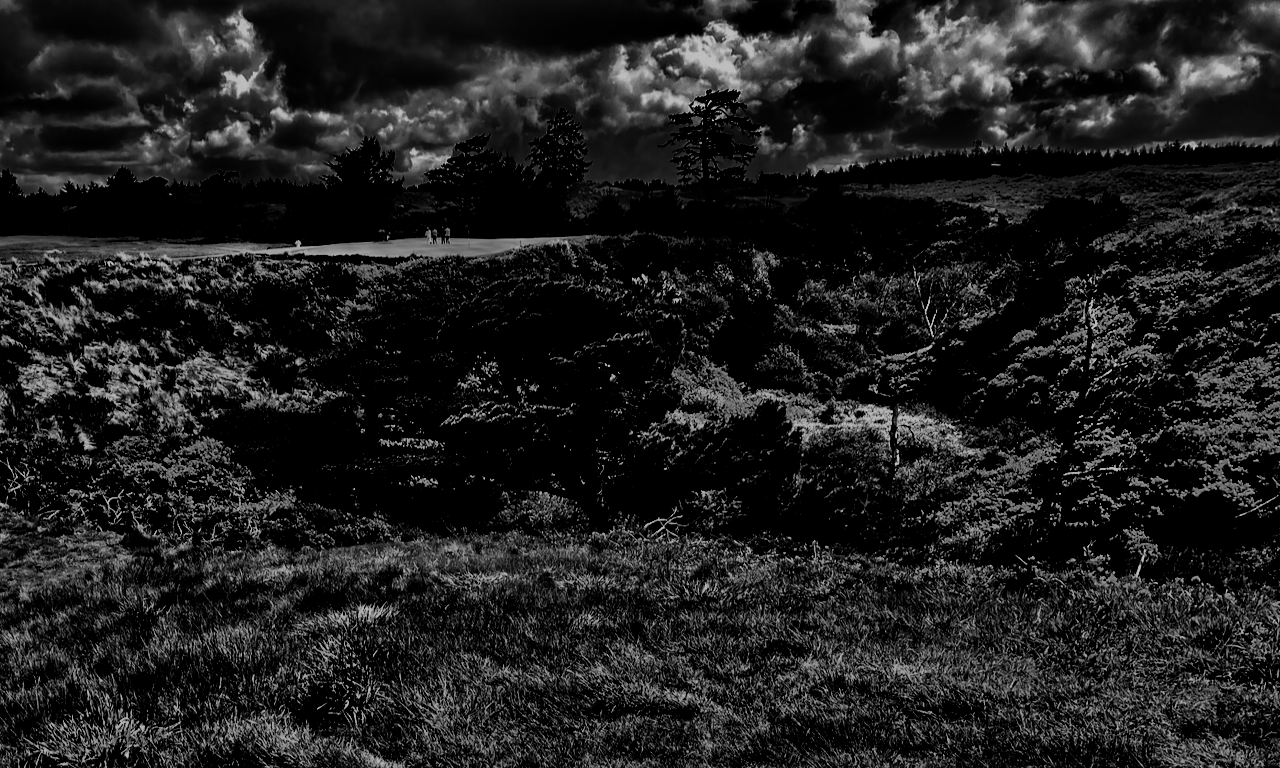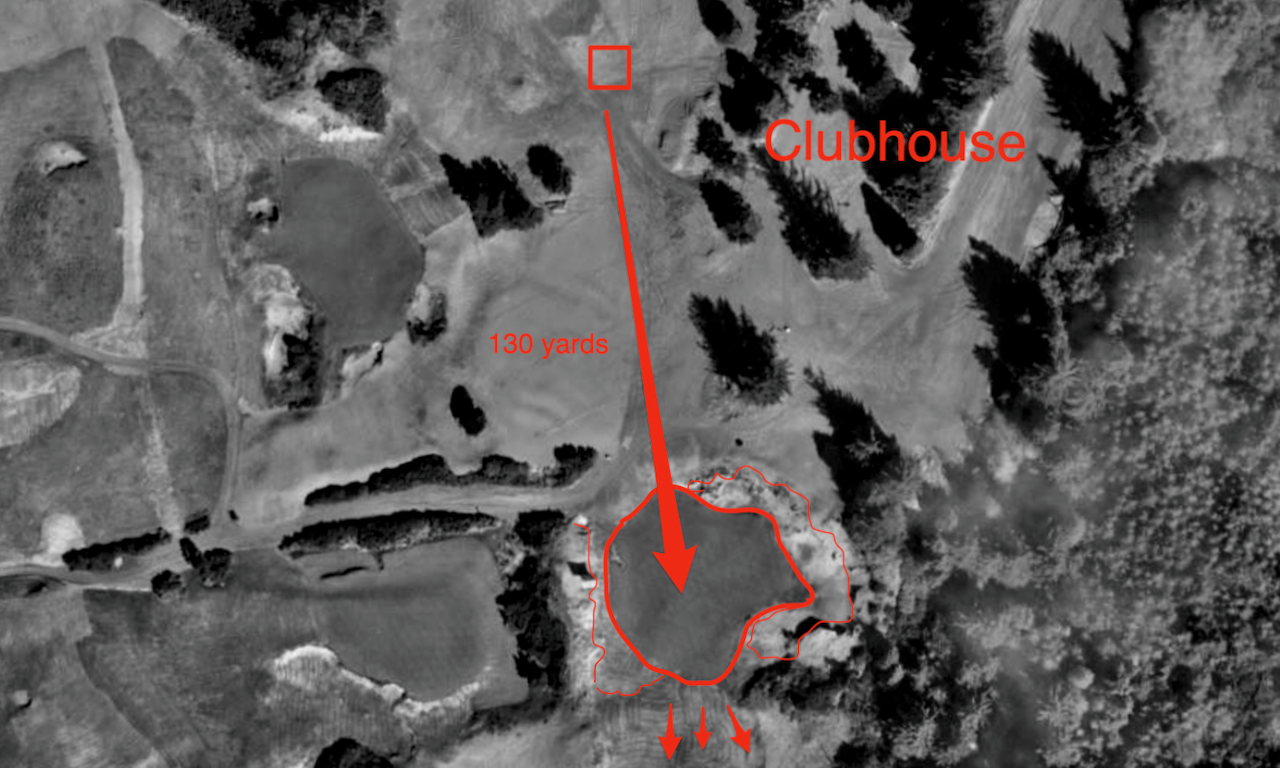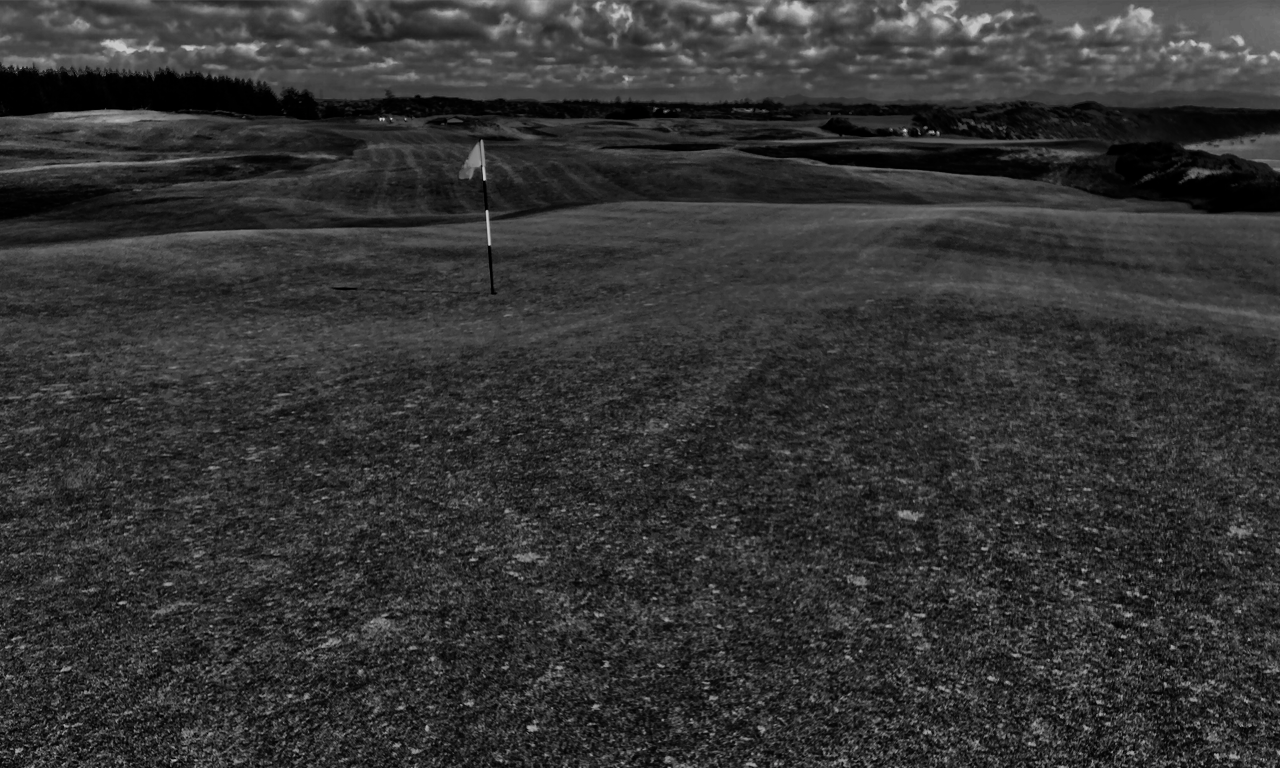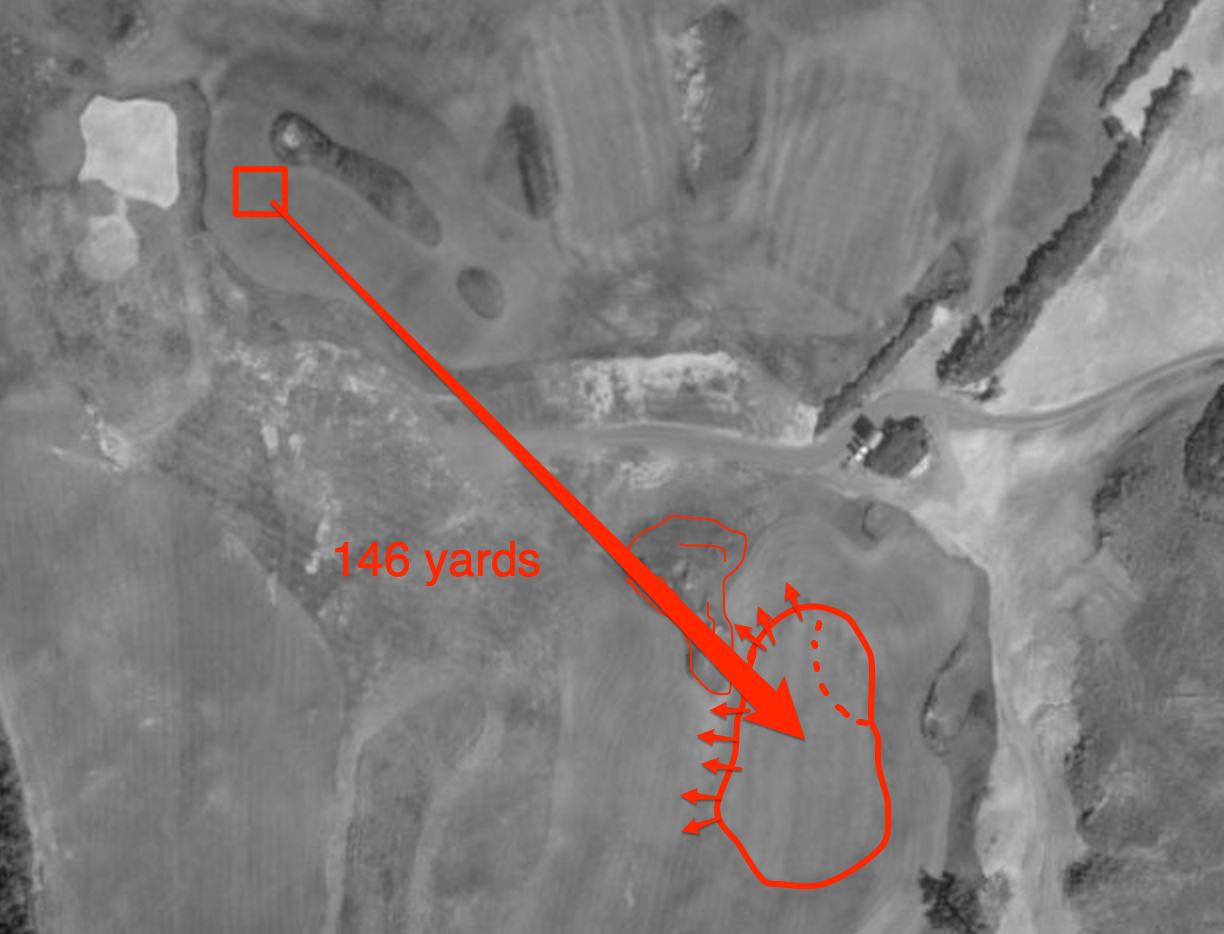The Sheep Ranch, Bandon’s fifth 18-hole golf course, has raised an argument among the muckrakers on golf social media: Is the resort better for having it, versus what was there previously?
In case you weren’t aware, the current route sits on a plot where 13 greens once lay, left by Tom Doak, connected by fairways expanding in every direction. No route existed. Merely 13 greens and your choice in how to get them. An idyllic experiment. Although many are thrilled with the fifth addition to the Bandon portfolio, there is a healthy number who argue that Sheep Ranch’s former purpose was the better.
And these people, let’s be clear, are likely overly idealistic. Calculate the logistics: To play at the former concept course, one required permission. A choose-your-own-adventure golf course is a major liability, potentially even for just two foursomes on the property at one time. The current setup opened the gates, so to speak. We appreciate the original concept, but it’s totally unattainable if open to the general public.
The property’s former purpose opens up a massive opportunity, however, if Mike Keiser decided that he wanted to raise an intense amount of money for some charitable purpose. Many are willing to cough up thousands at charity auctions for foursomes at a private course. Think what you could do (and the money the item would earn) to have free rein at the modern Sheep Ranch for a day?
The Coore and Crenshaw retooling resulted in greens that play more to the purpose of a set route, sure. But the Sheep Ranch’s relatively cramped plot also means there are far fewer “wild” areas…the dense dunes and fescue that separate holes at the resort’s other courses. This opens the door to bold ideas and alternate routes.
 Mike Keiser playing “Sheep Ranch” on Bandon Dunes No. 17, by adding a par 3 tee at No. 17. (Photo Cred: BPBM)
Mike Keiser playing “Sheep Ranch” on Bandon Dunes No. 17, by adding a par 3 tee at No. 17. (Photo Cred: BPBM)
Keiser, I’m sure, has done this. If you’ve played the original Bandon course, you know that he had a not-so-secret teebox built at No. 17 for playing it as a par three. Who knows what holes he (and probably Coore ‘n’ Crenshaw), have mentally devised at Sheep Ranch.
The rest of us will just need to make do with plotting absurd routes across the Punchbowl (this article was at least partially inspired by watching the No Laying Up crew partake in an improvised playoff at this eternal putting surface).
Until we get the golden ticket to a day alone at Sheep Ranch, our hypotheticals will remain just that. Here are eight holes — admittedly kept within the boundaries of par 3, 4, or 5 — drawn up while sitting at Denver International Airport for a few hours.
 Don’t let the building covered in windows distract you from the green covered in sandstone. (Photo Cred: BPBM Graphics Dept.)
Don’t let the building covered in windows distract you from the green covered in sandstone. (Photo Cred: BPBM Graphics Dept.)
Hypothetical #1: No. 1 tee to No. 11 green (130 yards)
No. 11 is what the Brits call a “marmite” hole…either you like it or you don’t. Count me among the latter. Playing along the inland boundary of the property, the make-or-break moment occurs when playing one or two clubs up to a green that sits within a man-made hollow named the “volcano,” once the sand-mining site to supply courses on the other side of Whiskey Run.
It’s about here where Keiser will regret giving us free rein, as we turn south from the first tee and take aim at this green, especially if the flag happens to be in the “left” position (throughout this feature, we’ll reference flag positions as if you’re looking at the green from its new tee, not its original). This line is risky from both a property damage and actual golf perspective, involving an 130-yard direct carry of the clubhouse and, hopefully more relevant, the grassy rim of the “volcano” at the front of the putting surface. This flag will be blind, but players can also aim to work the ball right-to-left.
Much less worrisome would be flags at the center or “back,” although going long when chasing back flags could send you all the way down to the No. 11 fairway, potentially creating a second shot that plays even longer than your first.
 Don’t worry…we’ll explain the hazard name. And the hole in general. (Photo Cred: Bing…Google for Golfers)
Don’t worry…we’ll explain the hazard name. And the hole in general. (Photo Cred: Bing…Google for Golfers)
Hypothetical #2: No. 1 tee to No. 2 green (454 yards)
Cutting some stress from the property managers’ minds, the next hole turns on the first tee’s axis and aims out toward the wider course. A common complaint among lower-HCP analysts is that Sheep Ranch’s final par five measures a mere 464 from the tips. Ha! Allow us to introduce one that plays 10 yards shorter, and downhill at that!
You’ll need to begin at the beige tees, as a few tree clusters make this drive difficult from other positions. From here, you’ll see what Max Behr would call a “line of charm”…a hazard placed to deter the golfer from pursuing the most direct line to the hole. Although much of the property is playable grass, the fairways of Nos. 18, 2, and 12 fence in the largest waste area at the Sheep Ranch, which I have dubbed “Khnum’s Pyramid,” for the Egyptian ram-headed god.
There are three possible routes to the hole. The safest (and longest) will be down No. 18’s accommodating fairway where, with a bit of downhill run, you’ll lay up to No. 2’s fairway and leave a nice wedge shot in.
The second route involves attempting to work a draw and run down the inside edge of the No. 12 fairway. It’s unlikely that you’ll manage to crank it hard enough to get out of the small valley at the front of that fairway, but you’ll still have a 200-yard (uphill) approach to the green over some rough stuff. If that doesn’t seem worth it anymore (it probably shouldn’t), you can lay up at the “left” of the green. This landing area leave a less-predictable lie than on the right side of the green (for those coming from No. 18’s fairway) but it’s not killing a birdie opportunity.
In case you hadn’t guessed, neither of those routes measures 454 yards. Much more, in fact. But if you’re feeling brave, there’s the third route. Rather than play to the middle of the No. 18 fairway, play as long as possible to its far-edge. If you find the ideal distance (and don’t roll off), you’ll have an 170-yard approach to this raised green, almost all carry across the pyramid. And even if you carry the pyramid, you’ll need a few more yards in the air to get across the grass bunker next to the green, one of the largest and deepest at Sheep Ranch. Tough shots are the price of glory!
 The flag possibilities are…not limited. (Photo Cred: BPBM Graphix Dept.)
The flag possibilities are…not limited. (Photo Cred: BPBM Graphix Dept.)
Hypothetical #3: No. 3 tee to No. 16 green (197 yards)
The premise for Hypothetical #3 is a miss that happens more often than rangers would like.
One of the keys to making an 18-hole route work on the Sheep Ranch property involved building two greens on the famous Fivemile Point. No. 16 is the more famous of the two, playing almost entirely along the cliff, to a larger putting surface. No. 3 takes second-fiddle…not directly on the cliff and about 30 yards shorter. Occasionally, to everyone’s chagrin, someone over-clubs and carries the back of the No. 3 green, denoted by dramatic mounding, and ends up down on the No. 16 putting surface.
This mishit might play perfectly to our hypothetical par three…if you can make the hit when you’re supposed to.
First, the flag will be just barely visible, as the front of this green (No. 3) flows down onto No. 16. And then there’s strategy…how realistically can someone play for the pin? The best bet for landing on the bottom area without contending with the mounds is to hit a long club and hope that the typical Winter winds kill it dead, dropping it on the (my estimate) 35-yard wide “bottom tier.” If it’s the Summer…you’re out of luck.
Playing a shorter club to avoid the risk of flying off the cliff brings the mounds into play, which could redirect your ball any which way. The ground game offers a similar risk-reward carnival disk-drop game.
Is the difficulty of this hole too much for a good, full-time golf course? Yes. Is it wild enough to be fun on a cross-country experiment round? Definitely. If we had our way, someone would play through with a putter. Like the Punchbowl, this is an exercise in absurdist enjoyment.
 The whole “north-to-south” thing made this hole tough to capture in a graphic, but hey: Here’s the same photo everybody else took from the No. 6 teebox. (Photo Cred: BPBM)
The whole “north-to-south” thing made this hole tough to capture in a graphic, but hey: Here’s the same photo everybody else took from the No. 6 teebox. (Photo Cred: BPBM)
Hypothetical #4: No. 7 tee to No. 5 green (465 yards)
I’ve met a few golfers who prefer Sheep Ranch above any other course at Bandon. I reckon that scenery plays a fair amount in this group’s assessment of golf courses, and Sheep delivers. The lengthy fairway at No. 6 is perhaps the best example, so here’s an alternative hole to please those who enjoy its gorse-laden cliffs. It also plays much tougher than No. 6, which was already the No. 1 HCP hole.
The tee shot allows us to utilize a feature at No. 6 that is underutilized in its current setup: the spine running down the middle at the front of the hole’s fairway. Depending on the wind, the average hitter can get their tee shot past it when playing the original hole. It can become the hog’s back it was always meant to be coming the other way.
Those who end up on the left side of the spine will face a much shorter shot to the green, perhaps 160 yards and, more importantly, the flag will be visible. The risk, especially for those playing a draw to stay left, will be the risk that your ball rolls out over the aforementioned beautiful cliffs. Those who stay right of the hog’s back will face both a longer approach, but also a dune blocking their view. Furthermore, a long approach on the ground may be redirected by the numerous mounds that crown this putting surface. The good news is that there’s plenty of room to lay up to the front-right of the green, and aim for par rather than birdie.
 The true crazy train hole at Sheep Ranch Unlimited is from the No. 1 tee to No. 9 green, but this is a start. (Photo Cred: BPBM Graffix Team)
The true crazy train hole at Sheep Ranch Unlimited is from the No. 1 tee to No. 9 green, but this is a start. (Photo Cred: BPBM Graffix Team)
Hypothetical #5: No. 14 tee to No. 15 green (605 yards)
A fail-proof way to play the Punchbowl is to simply find a flag on the other side of the 2.5 acre lot and just go nuts. Is it creative? No. Is it fun? Yes. Although we considered mapping out a series of routes from the No. 1 tee to the No. 9 green, that seemed like an exercise in excess and so we maxed out our hypotheticals at this, a 605 yard trek, beginning with our favorite tee shot on the property.
I’m one of the rare folks you’ll hear that from…many dislike the view from the No. 14 tee box. Identifying the proper line across the vast, shortgrass horizon is confusing, and intentionally so, hearkening to the links of olde. On our hole, you’ll at least know that you want to be on the right side of the large dune…but it’s still a risk/reward. Anywhere you land over there will kick down in the correct direction. However, being kicked down from the far end of the dune will leave you closer to the target than an earlier bounce-down. That said, hitting it farther also creates the possibility of mishitting it farther, and bouncing down to the left side of the property’s largest sand complex is effectively a penalty shot here, preventing any chance of getting to the green in three.
Assuming you landed on the correct side of this dune, you’ve got two choices: The first is playing to the front of the No. 4 fairway, which will offer the shortest third shot, albeit one that involves a forced carry…to a green that Coore and Crenshaw clearly angled to play from the existing No. 15 fairway. Playing toward the left edge of the No. 4 fairway will leave a better angle into the No. 15 green, and one that allows a ground approach. The problem with this decision, however, is that it will involve laying up short of a waste area, which may be less club than many feel comfortable taking on the second shot of a 600-yard hole. That leaves a third option: Try carrying the waste and land on the No. 15 fairway, which obviously offers the optimal entrance to the No. 15 green.
A green, I might add, which is among my favorite on the course.
 Not Hypothetical #6…just a photo of the No. 15 green. (Photo Cred: BPBM)
Not Hypothetical #6…just a photo of the No. 15 green. (Photo Cred: BPBM)
Hypothetical #6: No. 17 tee to No. 5 green (349 yards)
If you played Sheep Ranch, you couldn’t have missed the not-so-secret teebox for No. 17, as it sits immediately behind the No. 16 green. This tee extends the otherwise short par four to 420 yards by offering a cape-style shot even more glorious than that at No. 6. The problem is the tee is entirely necessary for big-hitting competitive rounds, but a punch in the face for the average player hitting into the Summer wind. To keep rounds moving, the back tee isn’t actually an option for daily fee-payer. If you had the place to yourself as part of the charity auction that prefaced this post, you could hit from here…but again, it likely wouldn’t bode well.
It’s a shame such a scenic box goes unused. And so we propose a short par four traveling the opposite direction down the coast, again toward the No. 5 green. This makes a perfectly acceptable hole, with yet another gorgeous cliffside teeshot. That said, the hole might be even better played from the No. 16 Blue tees, which make it a 241-yard par four (play it both ways…you’ve got the course all day, after all). Long enough to border on “insane par three,” and short enough that Tom Weiskopf is upset that he didn’t think of it first.
Among the possibilities: driver or 3-wood at the green, obviously. Lay up short of the centerline bunker in the No. 15 fairway and take a full wedge in (intelligent, but lame). Carry centerline to the right and get a shorter approach, but also reckon with lurking cliffs. Carry centerline to the left for shorter approach, but one that also opens up the ground game. You’ve got more options than Strong Bad and a cantaloupe.
 Assuming you get the choice to choose the flag positions for the day, the back plateau of No. 10 is obvious. (Photo Cred: Bing Maps)
Assuming you get the choice to choose the flag positions for the day, the back plateau of No. 10 is obvious. (Photo Cred: Bing Maps)
Hypothetical #7: No. 5 tee to No. 10 green (146 yards)
This is perhaps the simplest of our hypotheticals, playing around 146 yards from the beige tees at No. 5 back to the green at No. 10. Slightly uphill, the green will likely be hidden by the smoothed-off dune at the front, which is slightly hairy at its left (when viewed from the tee).
I envision this hole as a more dramatic, links version of what I’ve seen at many Donald Ross courses…a par three where the back of the green is visible, but the front is blocked by a slight rise in the landscape.
Knowing the tee location will be key here. If at the front, players may want to try landing it at the top of the ridge and rolling it down onto the green, lest they roll too far. The more “have-a-day” pin will be featured on the pronounced tier at the back and left…just as when playing the hole in its typical par four formation, missing this tier to the safe area right will make for a strenuous two-putt. Missing the tier long will make for an even less-comfortable chip-and-putt.
These are just seven hypotheticals, and numerous others exist, no doubt. We’d be thrilled to hear and share them. Comment below or send them via the social media.